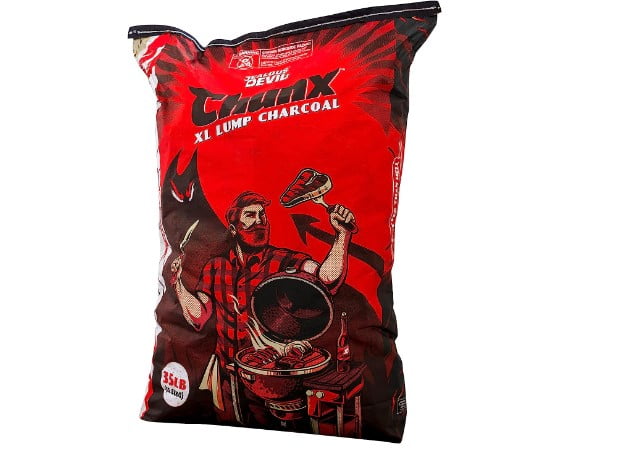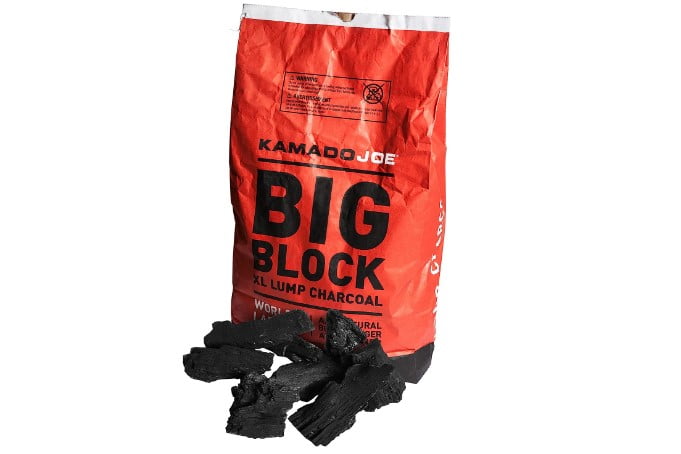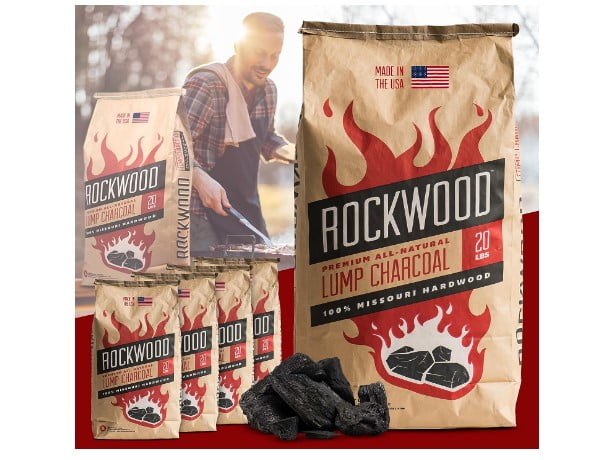If you’re a fan of grilling, you know that the choice of charcoal can make a world of difference in your culinary creations. The right kind of charcoal can take your grill game from adequate to extraordinary, especially when you’re using ceramic grills.
Ceramic grills are uniquely designed to retain heat and evenly distribute it, so selecting the right charcoal for them is paramount. In this article, we take a close look at the top three charcoal choices for ceramic grills in 2023, helping you find the perfect match to enhance your grilling experience.
What Features To Look For When Choosing The Best Charcoal for Ceramic Grills
When selecting the best charcoal for ceramic grills, several features stand out as crucial to enhancing your grilling experience:
Hardness
The best charcoal for ceramic grills should be dense and hard. Hard charcoal burns longer and at higher temperatures, which is ideal for ceramic grills known for their heat retention abilities.
Size of the Lumps
The size of the charcoal lumps matters. Larger lumps tend to burn for extended periods, making them ideal for slow and low cooking styles often employed with ceramic grills.
Low Ash Production
The best charcoal for ceramic grills should produce minimal ash. Excessive ash can clog the grill’s air vents and hinder temperature control.
Smoke Flavor
The smoke flavor that the charcoal imparts to the food is a vital consideration. Different types of wood used in the charcoal production process give off different flavors. Choose a charcoal that complements your preferred taste profile.
Clean Burning
The best charcoal for ceramic grills should burn cleanly. That is, it should not emit harmful chemicals or excessive smoke that can affect the taste of the food or the environment.
Ease of Lighting
Even though ceramic grills retain heat well, it’s still essential that your choice of charcoal lights easily and quickly. This feature ensures you can start grilling without much delay.
Remember, the right charcoal can significantly enhance your ceramic grilling experience, but the ‘best’ charcoal ultimately depends on your individual preferences and grilling style.
Best Charcoal for Ceramic Grills Reviewed in This Article
Now that you have a better understanding of what to look for when selecting charcoal for your ceramic grills, let’s move on to the reviews. Here we present three of the best charcoal choices available in 2023.
Jealous Devil All Natural Hardwood Lump Charcoal
Experience PRO / RESTAURANT QUALITY with these pellets. No more sparking or popping, just a clean and efficient burn. With low ash production, they are perfect for any grill, smoker, or kamado.
With twice the cook power, hotter temperatures, and a far longer burn time, you’ll have the ultimate grilling experience. Whether you’re using open grills or smokers, our pellets will impress you.
It enhances the flavor profiles of your dishes without overpowering them. From whitefish to brisket, our pellets will elevate your cooking. Use them alone or blend them with your favorite wood for a personalized touch.
Kamado Joe KJ-CHAR Big Block XL Lump Charcoal
Introducing Kamado Joe 100% Natural Lump Charcoal – the ultimate choice for BBQ enthusiasts who crave clean burning, robust wood-fire flavor.
Unlike other brands made from scrap furniture or processed wood, Kamado charcoal is crafted from real trees, ensuring an authentic taste experience.
Experience the power of hardwood with Kamado Joe. The charcoal burns hotter, allowing you to achieve sizzling steak-searing temperatures. Paired with our ceramic grill, which provides excellent insulation, you’ll use less heat to cook your food, resulting in juicier meats.
But it doesn’t stop there. This charcoal burns longer, thanks to the high-quality hardwood used in its production. With the perfect blend of fast-starting small pieces and long-burning large pieces, you can enjoy extended periods of low and slow cooking.
Rockwood All Natural Hardwood Lump Charcoal
Discover the 100% all-natural lump charcoal for grilling, crafted from Missouri-grown Oak, Hickory, Maple, and Pecan, our hardwood lump charcoal delivers exceptional flavor to your food.
With no chemicals or additives used in its production, you can be confident that your food remains free from harmful substances.
Experience convenience at its finest with our slow-burning, ash-minimizing hardwood lump bbq charcoal. It lights easily, heats quickly, and burns boldly, resulting in juicier and more flavorful food.
Suitable for any type of grill or smoker, our Rockwood grilling charcoal is kilned to higher carbonization, ensuring a cleaner and hotter burn. Perfect for grilling or smoking meat, fish, and vegetables, it leaves minimal ash behind, making cleanup a breeze.
Types of Charcoal for Ceramic Grills
There are primarily three types of charcoal:
Lump Charcoal
This is the most natural form of charcoal, made directly from hardwood material. It lights quickly, burns hotter than other types, and imparts a distinct flavor to your food. The downside is that lump charcoal burns out faster than other forms and its uneven pieces may not provide a consistent temperature.
Briquette Charcoal
Briquettes are made by compressing sawdust and other wood by-products into uniform shapes. They are known for burning longer and maintaining consistent heat, which is beneficial for lengthy cooking or smoking sessions on ceramic grills.
Binchotan Charcoal
Binchotan, also known as white charcoal, is a traditional Japanese charcoal made from oak. It burns at a high temperature and for an extended duration, making it perfect for ceramic grills. Binchotan produces almost no smoke, ensuring that the flavor of your food remains unadulterated.
Each of these types of charcoal brings unique characteristics to the table. The choice between them depends on what you value most in your grilling experience – be it the heat, flavor, burning duration, or consistency.
Common Questions About The Best Charcoal for Ceramic Grills
What type of charcoal is best for grilling?
When it comes to choosing the best charcoal for grilling, it ultimately depends on your priorities as each option has its own advantages and disadvantages.
However, overall, lump charcoal stands out as the superior choice. Apart from the difference in price, there are a few key distinctions to consider:
- Starting: Right from the beginning of your grilling session, you’ll notice that lump charcoal is easier to light without the need for accelerants.
- Heat: When you need to crank up the heat, lump charcoal is your go-to option as it burns approximately 40 to 50 degrees hotter than briquettes.
- Evenness: Briquettes, due to their uniform shape, tend to provide a more consistent heat output. If you have a grill full of meat or veggies and want to ensure even heating, charcoal briquettes will deliver on that front.
- Burning time: Because lump charcoal burns hotter than briquettes, it also burns faster. While this is generally not an issue, if you’re aiming for a slow and low grilling session, briquettes will last longer without requiring additional charcoal.
- Additives: For purists, lump charcoal is the way to go. Unlike briquettes, lump charcoal does not contain additives to hold them together, which can result in more ash production. Excessive ash can disrupt the airflow in your grill or smoker.
In summary, lump charcoal ignites more easily, and burns hotter without additives, while briquettes contain additives, burn longer, and provide a more consistent burn.
What is the best charcoal for ceramic grills?
When it comes to ceramic grills, choosing the best charcoal for ceramic grills is crucial. All the considerations mentioned earlier still apply. However, if you prefer lump charcoal but worry about uneven heat, using a Kamado grill eliminates that concern entirely.
Ceramic grills excel at burning lump charcoal evenly, although briquettes provide an even smoother burn.
Regardless of your choice, both options deliver impressive heat. It’s worth checking if your grill manufacturer recommends a specific charcoal for your ceramic grill. Opting for natural lump charcoal is ideal, and you can enhance the flavor by adding wood chips to your grill.
How much charcoal should you use for a ceramic grill?
To optimal charcoal placement in a ceramic grill, begin by arranging larger pieces as a base to fill the bottom of the firebox. Gradually add smaller charcoal pieces, ensuring they form a pyramid shape that reaches the peak in the middle. The peak should align with the top of the firebox, just below the holes in the grill’s fire ring.
What is the optimal method for storing charcoal?
Despite its long-lasting nature, all types of charcoal are susceptible to moisture due to their porous composition. If dampness infiltrates the charcoal, it will not ignite when used.
- Lump charcoal, in short, lasts indefinitely and does not spoil. However, briquettes have a more limited lifespan as they rely on chemical additives that can dissipate over time.
- When it comes to preserving the freshness of briquettes, simply keeping them in an open bag won’t suffice. The best approach is to store charcoal in an airtight container, which is equally effective for lump charcoal.
- For storing both briquettes and lump charcoal, you have various options. You can choose a simple plastic bin or metal trashcan, or you can invest in a specialized charcoal storage container.
Video How to Light a Kamado Grill with Lump Charcoal | Quick Tip Tuesday
In this video, you’ll learn the basics of lighting a Kamado Grill with lump charcoal. Watch this tutorial for all the tips you need to get started with lump charcoal on your ceramic grill.
Final Thoughts
Choosing the best charcoal for ceramic grills can significantly enhance your grilling experience. Remember, lump charcoal is excellent for quick, high-heat grilling, whereas briquettes provide a longer, consistent burn ideal for extended smoking sessions.
However, Binchotan, or white charcoal, is undoubtedly worth considering for its long burning duration and minimal smoke production. Ultimately, the choice depends on your grilling preferences. Don’t forget to store your charcoal properly to maximize its shelf life and ensure optimal performance. Happy grilling!






